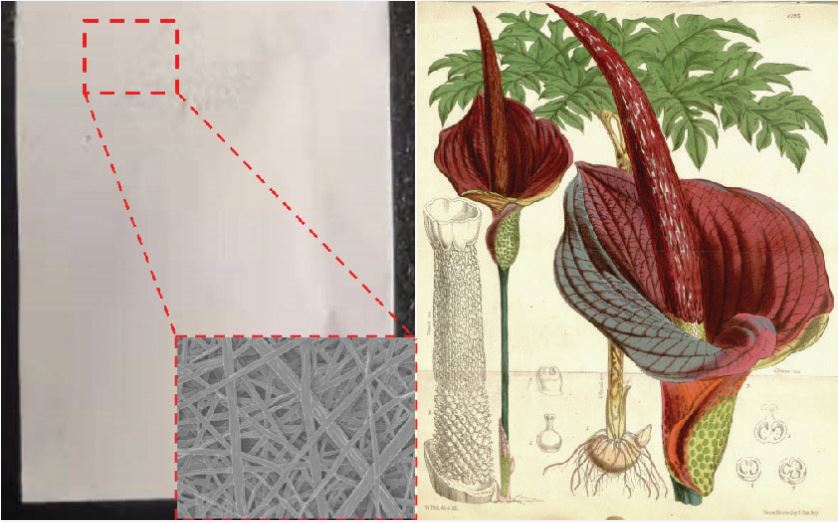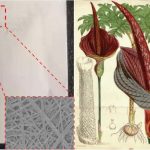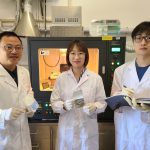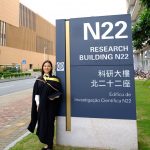 New vascular scaffolds (left) developed with polysaccharides from Chinese medicinal herb Konjac (right)
New vascular scaffolds (left) developed with polysaccharides from Chinese medicinal herb Konjac (right)
A research team in the University of Macau’s (UM) Institute of Chinese Medical Sciences, led by ICMS Associate Professor Wang Chunming, has designed a biomaterial that can preferentially support vascular endothelial cell adhesion and promote blood vessel growth and wound healing. This material is thin and cloth-like and is produced in a process similar to a spider spinning silk. Once applied clinically, this invention may provide new therapeutic approaches for peripheral vascular disease and many other disorders. The paper has been published online in Advanced Materials.
The incidence of vascular diseases continues to rise because of global population ageing and changes in dietary patterns. Fortunately, in the past decade, vascular grafts and substitutes have brought new hope for patients. The most important cells that compose the abundant vasculature in our body are vascular endothelial cells (ECs). A desirable graft material should be able to support ECs to settle down on its surface, which provides fertile ground for new blood vessels to blossom. Furthermore, ECs are expected to fully cover the material so that the blood cannot ‘sense’ its presence, in order to avoid triggering blood coagulation and thrombosis. Nevertheless, materials available today either reject or welcome all cells to their surfaces without having a specific preference for ECs, and this has led to suboptimal efficacy.
Inspired by fungal invasion of human vasculature, the research team has found that certain sugars on the microbes (known as polysaccharides) can serve as ‘bridges’ between ECs. Although fungal sugars are difficult to fetch, their structures could perhaps be mimicked by polysaccharides of other resources. However, polysaccharides are hydrophilic and difficult to manipulate. Through repeated tests, UM researchers eventually selected a polysaccharide from the natural herb Konjac as the model molecule. They processed the polysaccharide in a unique chemical process and sprayed it into a thin cloth-like material in an electric field, similar to the process of a spider spinning silk. This novel material has a high affinity for ECs but exhibits low interaction with other tissue cells. Implanted in a hind limb ischemia model in mice, the material has shown to promote capillary regeneration without requiring other drugs or causing thrombosis or toxicity.
According to Prof Wang, he and his team have been working for years to identify ingredients from Chinese herbal medicine that can promote tissue regeneration. Although this study is still in its early stage, the team will actively seek opportunities to assess the efficacy and safety of this invention in larger animal models, with the ultimate goal of realising clinical translation and developing medical devices or drug products.
ICMS’s PhD student Mu Ruoyu and graduate Zhang Yuhan (graduated in January 2020 with a master’s degree) are the co-first authors of the study. Prof Wang and Prof Dong Lei at Nanjing University are the co-corresponding authors. ICMS professor Su Huanxing, PhD students Yan Lingli and Liao Zhencheng, as well as Dr Yang Yushun at Nanjing University, made substantial contributions to this study. The study was funded by the Science and Technology Development Fund, Macao SAR (file number: 0018/2019/AFJ and 0097/2019/A2). The full-text version of the study can be viewed at: https://onlinelibrary.wiley.com/doi/10.1002/adma.202103490




